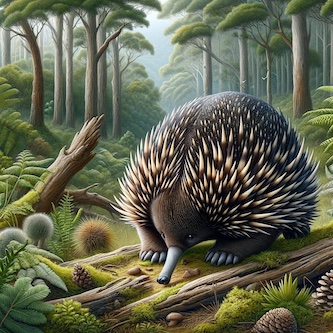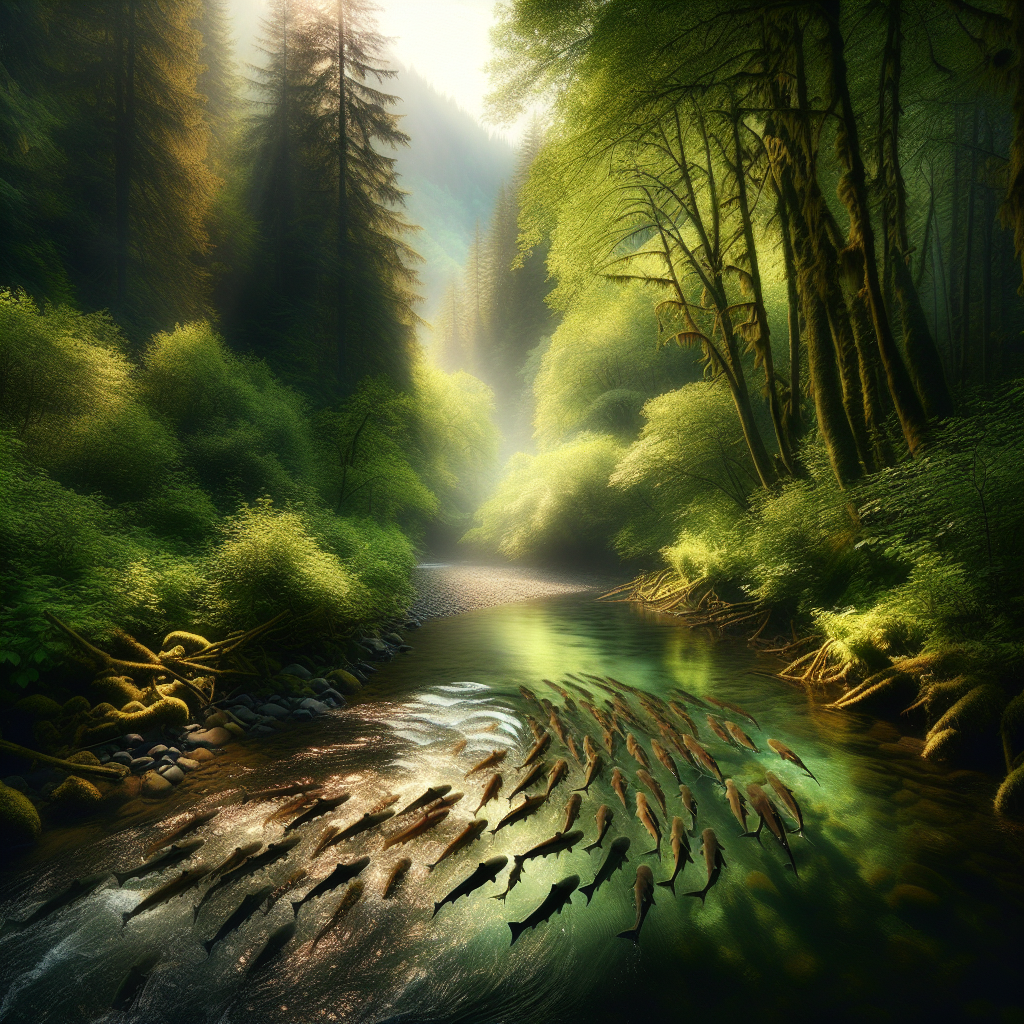Scientists found a special animal called the Attenborough’s long-beaked echidna. People thought it was gone forever, but it’s not. The scientists took videos of this animal that looks like a mix of a hedgehog and an anteater. A very famous person, Sir David Attenborough, was very happy about this news.
The scientists went to a faraway place with big mountains to find the echidna. They had to be very brave because there were dangerous snakes and bugs that suck your blood. But they found new kinds of bugs, frogs, and a secret place under the ground. They also saw some kangaroos that live in trees and very pretty birds.
The echidna is very hard to find, but finding it can help stop fights between people. The scientists hope that finding the echidna and other new animals will help protect the mountains. Right now, the echidna is in danger but not protected by the law. It’s important to look after all the special animals and plants there.
Original news source: First-ever images prove ‘lost echidna’ not extinct (BBC)
Listen
Slow
Normal
Fast
Group or Classroom Activities
Warm-up Activities:
– News Reporter Role-play
Instructions: Divide the students into pairs. One student is a news reporter, and the other is a scientist who has just discovered the Attenborough’s long-beaked echidna. The reporter interviews the scientist, asking about the discovery, the difficulties faced during the expedition, and the importance of the discovery for conservation efforts. Students should use past tense for the discovery and present tense for explaining the current situation.
– Sketch It
Instructions: Provide each student with a piece of paper. Read the description of the Attenborough’s long-beaked echidna (a mix of a hedgehog and an anteater) and the other animals mentioned in the text (tree kangaroos, pretty birds). Students should try to sketch the animals as they understand them from the descriptions. Afterward, have students share their drawings and discuss the features of each animal in English.
– Vocabulary Pictionary
Instructions: Write down key vocabulary from the article on pieces of paper (e.g., echidna, scientist, mountains, endangered, conservation). Divide the class into two teams. Each team takes turns drawing the word they pick while their team guesses the word in English. Set a time limit for each turn to keep the game moving quickly.
– Opinion Spectrum
Instructions: Create a line in the classroom with one end labeled ‘very important’ and the other ‘not important’. Read statements related to the article, such as “Protecting endangered species is important” or “Exploring new places is exciting.” Students position themselves along the spectrum according to their opinion. Then, select students from different points on the spectrum to explain their position.
– Future Predictions
Instructions: Have students work in small groups. They should discuss and make predictions about the future of the Attenborough’s long-beaked echidna and the environment mentioned in the article. They can discuss what will happen if the echidna is not protected by law or if more scientific expeditions are conducted. Encourage the use of future tense (will, going to) and have them present their predictions to the class.
Comprehension Questions:
1. What is the name of the special animal that scientists found?
2. What two animals does the Attenborough’s long-beaked echidna look like?
3. Who was the famous person that was happy about the discovery of the echidna?
4. Where did the scientists go to find the echidna?
5. What are some of the dangers the scientists faced while looking for the echidna?
6. What are some other things the scientists found in the mountains besides the echidna?
7. Why is finding the echidna important for stopping fights between people?
Go to answers ⇩
Listen and Fill in the Gaps:
Scientists found a special animal called the Attenborough’s long-beaked echidna. People thought it was (1)______ forever, but it’s not. The scientists took videos of this animal that (2)______ like a mix of a (3)______ and an anteater. A very famous person, Sir David Attenborough, was very happy about this news.
The (4)______ went to a faraway place with big mountains to (5)______ the echidna. They had to be very brave because there were dangerous (6)______ and bugs that suck your blood. But they found new kinds of bugs, frogs, and a secret place under the ground. They also saw some kangaroos that live in trees and very pretty birds.
The echidna is very (7)______ to find, but finding it can (8)______ stop (9)______ between people. The scientists hope that finding the (10)______ and other new (11)______ will help (12)______ the mountains. Right now, the echidna is in danger but not protected by the law. It’s important to look after all the special animals and plants there.
Go to answers ⇩
Discussion Questions:
Students can ask a partner these questions, or discuss them as a group.
1. What is a special animal you know about?
2. How would you feel if you found an animal people thought was gone?
3. Do you like going on adventures to find new things? Why or why not?
4. What do you think makes a person brave?
5. Are there any dangerous animals or bugs where you live? What are they?
6. Have you ever seen a very pretty bird? Can you describe it?
7. Do you think it’s important to find animals that are hard to see? Why?
8. How can finding animals stop people from fighting?
9. Do you think we should protect all mountains? Why or why not?
10. What does it mean when an animal is in danger?
11. Do you think the law should protect special animals? Why or why not?
12. Can you think of ways to look after animals and plants?
Individual Activities
Vocabulary Meanings:
Match each word to its meaning.
Words:
1. echidna
2. Attenborough
3. mountains
4. snakes
5. kangaroos
6. frogs
7. blood
8. danger
Meanings:
(a) Small, jumping amphibians that say “ribbit”
(b) Something that can hurt you or cause harm
(c) Long, slithery reptiles that can be poisonous
(d) Very big, tall land with rocks and snow on top
(e) A spiky animal like a mix of a hedgehog and an anteater
(f) Animals with pouches that hop
(g) A very famous person who was happy about the news
(h) Red liquid that flows through your body
Go to answers ⇩
Multiple Choice Questions:
1. What did the scientists find?
(a) A new type of kangaroo
(b) A special bird
(c) Attenborough’s long-beaked echidna
(d) A dangerous snake
2. Who was happy about the news of finding the echidna?
(a) Sir David Attenborough
(b) The scientists
(c) The kangaroos
(d) The bugs
3. Where did the scientists go to find the echidna?
(a) A city
(b) A faraway place with big mountains
(c) A beach
(d) A desert
4. What is the echidna a mix of?
(a) A kangaroo and a bird
(b) A snake and a bug
(c) A frog and a tree
(d) A hedgehog and an anteater
5. Why did the scientists have to be brave?
(a) The weather was very cold
(b) They had to climb big mountains
(c) There were dangerous snakes and blood-sucking bugs
(d) They were afraid of the kangaroos
6. What do the scientists hope finding the echidna and other new animals will help do?
(a) Find more bugs
(b) Make new friends
(c) Start fights between people
(d) Protect the mountains
7. What is the echidna in danger of?
(a) Being too popular
(b) Not being protected by the law
(c) Having too many friends
(d) Being too big
8. Why is it important to look after all the special animals and plants in the mountains?
(a) To protect them
(b) To make them famous
(c) To study them
(d) To make them go away
Go to answers ⇩
True or False Questions:
1. Sir David Attenborough, a very famous person, was happy about the news of finding the echidna.
2. Right now, the echidna is in danger and not protected by the law, so it’s important to take care of it and other special animals in the area.
3. Scientists did not discover a special animal called the Attenborough’s long-beaked echidna.
4. The scientists do not hope that finding the echidna and other new animals will help protect the mountains.
5. Many people believed this animal was extinct, but the scientists did not find it again.
6. They also discovered new kinds of bugs, frogs, and a secret underground place.
7. The animal looks like a mix of a hedgehog and an anteater.
8. The scientists had to be cowardly and avoid dangerous snakes and blood-sucking bugs to find the echidna.
Go to answers ⇩
Write a Summary:
Write a summary of this news article in two sentences.
Check your writing now with the best free AI for English writing!
Writing Questions:
Answer the following questions. Write as much as you can for each answer.
Check your answers with our free English writing assistant!
1. What kind of animal did the scientists find?
2. Who was the special animal named after?
3. What kind of place did the scientists go to find the echidna?
4. What other things did the scientists find in the mountains?
5. Why is finding the echidna important for stopping fights between people?
Answers
Comprehension Question Answers:
1. What is the name of the special animal that scientists found?
The special animal is called the Attenborough’s long-beaked echidna.
2. What two animals does the Attenborough’s long-beaked echidna look like?
It looks like a mix of a hedgehog and an anteater.
3. Who was the famous person that was happy about the discovery of the echidna?
Sir David Attenborough was the famous person who was happy.
4. Where did the scientists go to find the echidna?
The scientists went to a faraway place with big mountains.
5. What are some of the dangers the scientists faced while looking for the echidna?
They faced dangerous snakes and bugs that suck your blood.
6. What are some other things the scientists found in the mountains besides the echidna?
They found new kinds of bugs, frogs, a secret place under the ground, kangaroos that live in trees, and very pretty birds.
7. Why is finding the echidna important for stopping fights between people?
Finding the echidna can help protect the mountains, which can stop fights between people over the land.
Go back to questions ⇧
Listen and Fill in the Gaps Answers:
(1) gone
(2) looks
(3) hedgehog
(4) scientists
(5) find
(6) snakes
(7) hard
(8) help
(9) fights
(10) echidna
(11) animals
(12) protect
Go back to questions ⇧
Vocabulary Meanings Answers:
1. echidna
Answer: (e) A spiky animal like a mix of a hedgehog and an anteater
2. Attenborough
Answer: (g) A very famous person who was happy about the news
3. mountains
Answer: (d) Very big, tall land with rocks and snow on top
4. snakes
Answer: (c) Long, slithery reptiles that can be poisonous
5. kangaroos
Answer: (f) Animals with pouches that hop
6. frogs
Answer: (a) Small, jumping amphibians that say “ribbit”
7. blood
Answer: (h) Red liquid that flows through your body
8. danger
Answer: (b) Something that can hurt you or cause harm
Go back to questions ⇧
Multiple Choice Answers:
1. What did the scientists find?
Answer: (c) Attenborough’s long-beaked echidna
2. Who was happy about the news of finding the echidna?
Answer: (a) Sir David Attenborough
3. Where did the scientists go to find the echidna?
Answer: (b) A faraway place with big mountains
4. What is the echidna a mix of?
Answer: (d) A hedgehog and an anteater
5. Why did the scientists have to be brave?
Answer: (c) There were dangerous snakes and blood-sucking bugs
6. What do the scientists hope finding the echidna and other new animals will help do?
Answer: (d) Protect the mountains
7. What is the echidna in danger of?
Answer: (b) Not being protected by the law
8. Why is it important to look after all the special animals and plants in the mountains?
Answer: (a) To protect them
Go back to questions ⇧
True or False Answers:
1. Sir David Attenborough, a very famous person, was happy about the news of finding the echidna. (Answer: True)
2. Right now, the echidna is in danger and not protected by the law, so it’s important to take care of it and other special animals in the area. (Answer: True)
3. Scientists did not discover a special animal called the Attenborough’s long-beaked echidna. (Answer: False)
4. The scientists do not hope that finding the echidna and other new animals will help protect the mountains. (Answer: False)
5. Many people believed this animal was extinct, but the scientists did not find it again. (Answer: False)
6. They also discovered new kinds of bugs, frogs, and a secret underground place. (Answer: True)
7. The animal looks like a mix of a hedgehog and an anteater. (Answer: True)
8. The scientists had to be cowardly and avoid dangerous snakes and blood-sucking bugs to find the echidna. (Answer: False)
Go back to questions ⇧













